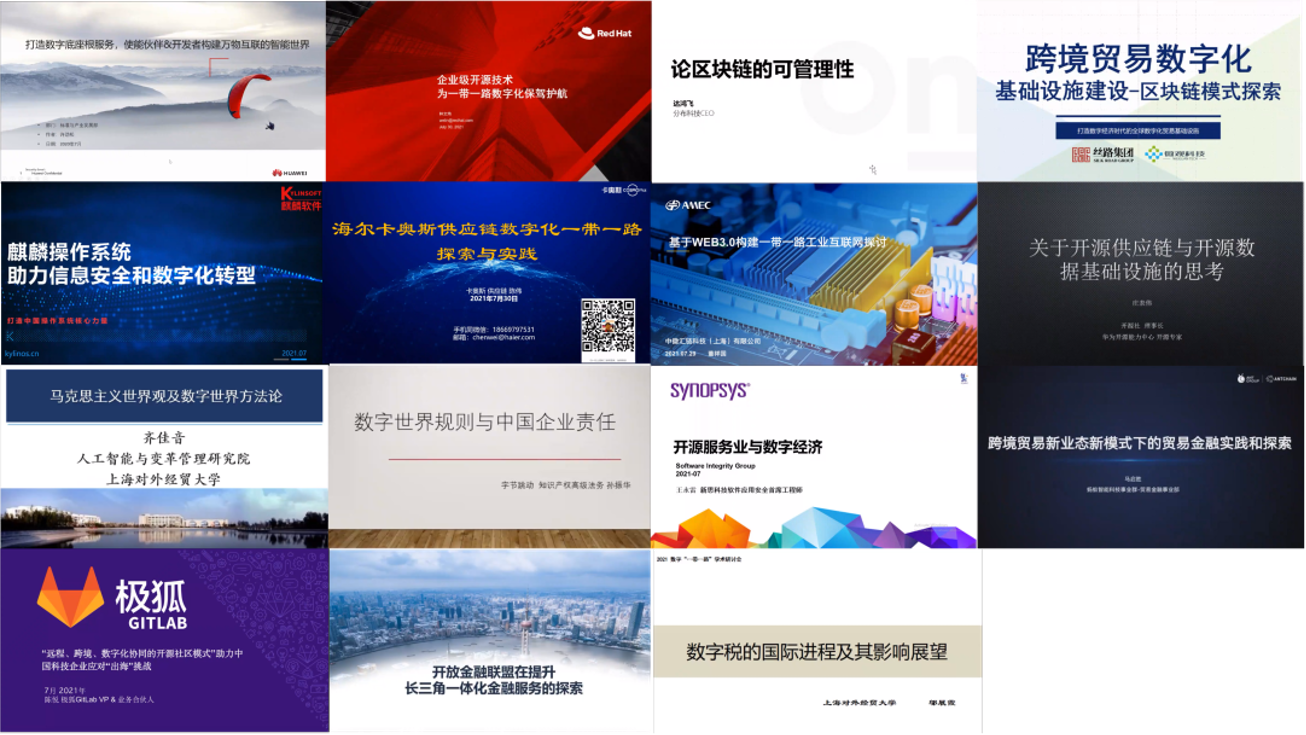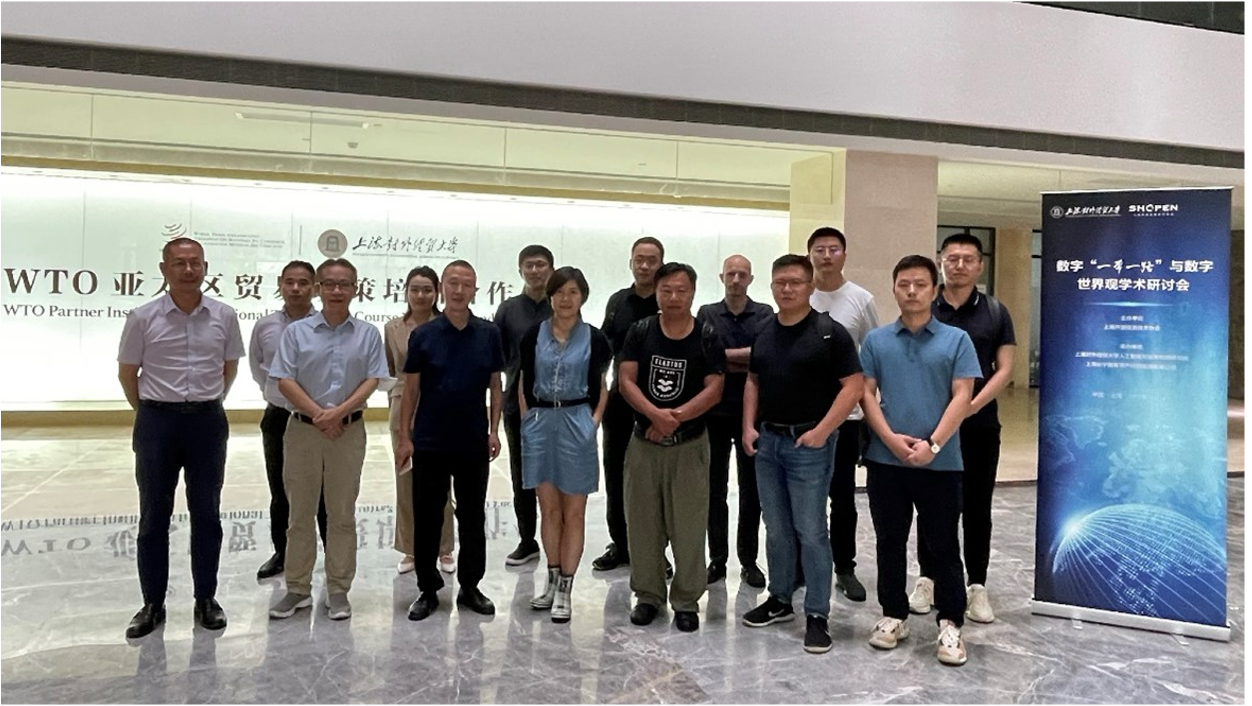Shanghai OpenSource Digital "Belt and Road" Collaborative Innovation Center
In August 2021, the Shanghai OpenSource Digital "Belt and Road" Collaborative Innovation Center was formally recognized with the credentials to proceed with its development initiatives. During the initial phase, the SHOPEN led the strategic planning and future-oriented development, organizing and engaging in multiple symposiums on the Digital "Belt and Road". This effort culminated in a consensus with local government and various enterprises, facilitating the application process for the collaborative innovation center.
Center's Positioning
The center is dedicated to executing the national innovation-driven development strategy, aligning closely with the development of the Shanghai Science and Technology Innovation Center, addressing critical national needs, and fostering a collaborative environment with complementary disciplines, fluid personnel movement, shared resources, and communal platform access.
Research Focus
The center is committed to leveraging Chinese technological expertise to empower "Belt and Road" nation using open-source methodologies. It will focus on mapping out development pathways, technical strategies, governance rules, standards, platforms, ecosystems, and the cultivation of talent.
Related Events

数字“一带一路”学术研讨会
开源已成为数字经济的一个主流共识,几乎所有的互联网公司都在拥抱开源,为开源生态做贡献。我们正处在百年未有之大变局,数字“一带一路”也是基于“一带一路”倡议的一个构想,是一个极具挑战性的话题,需要政府、企业、高校和社会组织的共同参与。

数字“一带一路”与数字世界观学术研讨会
从人类社会发展历史看,有怎样的世界观就有怎样的方法论,一切经济行为都是一定思维方式与思维定势的反映,思维方式直接影响着经济活动主体的认识与分析解决问题的能力。在未来的数字经济时代,开源创新等数字商品生产方式将制约着数字社会生活、数字政治生活和数字精神生活的全过程。与会嘉宾就数字思维、数字世界观、实施数字“一带一路”的意义与挑战、“一带一路”国际金融合作和治理模式、区块链技术在多边贸易中的应用、数字加密技术助力“一带一路”跨区域经济等话题展开交流讨论。

数字“一带一路”工作会议
Digital Public Goods Insight Report

不管是农业经济时代,还是工业经济时代,乃至数字经济时代,公共基础设施对于促进社会经济的发展都发挥着极其重要的作用。
农业经济时代,古代中国通过构建道路等公共基础设施而极度辉煌。公元前 212 年至公元前 210 年,秦始皇一统华夏后,修建了“高速”公路——秦直道。“秦直道”南起陕西林光宫,北至包头九原郡,横穿 14 县,全长 700 多公里。除了军事用途外,西域商人行经草原,便可以沿着“秦直道”直入关中,中国的丝绸茶叶也因“秦直道”得以畅销世界。“秦直道”开了欲强国、先治路的治国理念,是农业经济时代的公共基础设施。正是靠着这种强大的公路网,中国才成为当时世界的中心。
到了工业经济时代,各个国家更加重视对公共基础设施的建设。通过加强公路、铁路、桥梁、码头、机场等公共交通基础设施的建设,能够方便货物和人员的运输,降低交通成本,加快市场流通速度,促进区域间经济一体化;通过加强学校、医院、体育馆等公共服务设施的建设,能够提高居民的文化素质和健康水平,促进社会稳定和经济发展。公共产品数量和内容的增加,反映出社会经济水平的发展和公众对福利水平需求的变化。
在数字经济时代,数字公共基础设施已经在社会中扮演了越来越重要的作用。通过建设数字公共基础设施,推进互联网、大数据、人工智能等新一代信息技术与实体经济深度融合,数字公共基础设施推动产业结构高端化和产业体系现代化,助力新旧动能转换,加速产业数字化转型,促进产业结构的升级。同时在疫情期间,数字公共基础设施也有效应对了疫情的影响,在疫情防控常态化的形势下稳经济、稳增长,满足了数字经济的发展需求。
数字公共基础设施是指能够有效提供基本社会功能和服务的解决方案和系统,通常包括多个专有或开源解决方案的实施。由于数字公共产品具有开源开放和实现可持续发展目标的特性,其通常作为国家数字公共基础设施的一部分来实施。世界各国在推动数字化转型及发展数字经济过程中,都有数字公共产品的迫切需求。